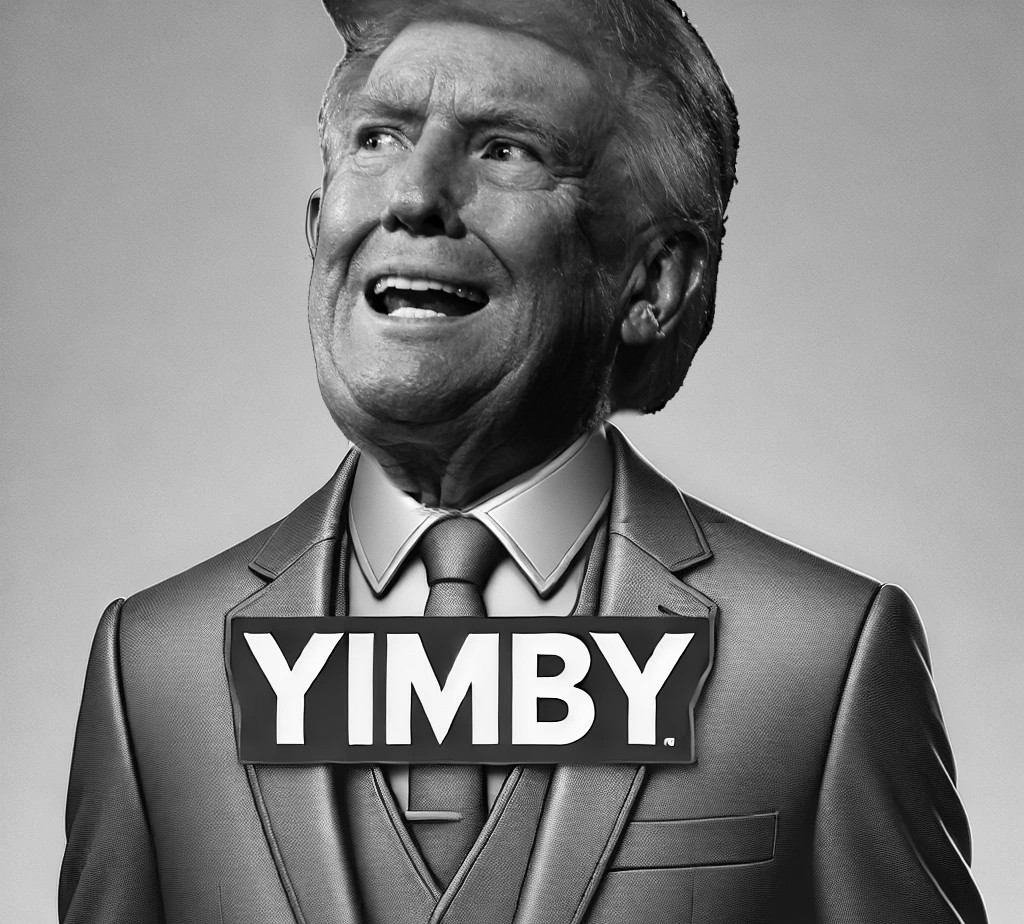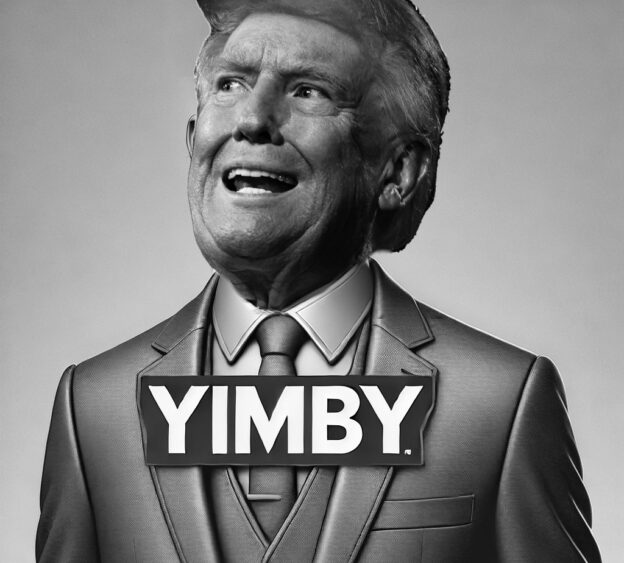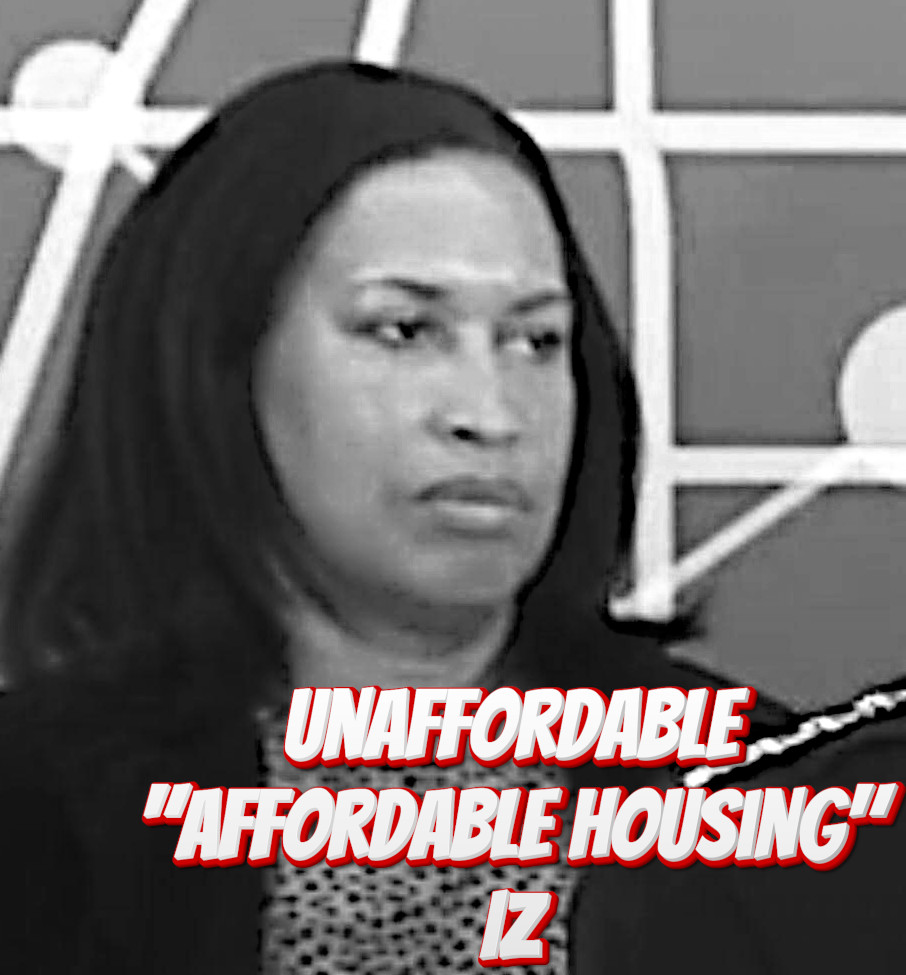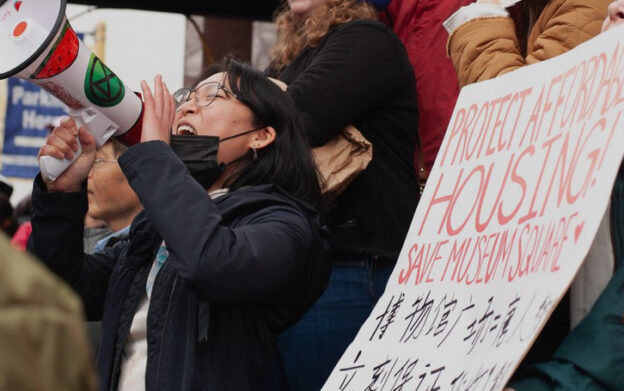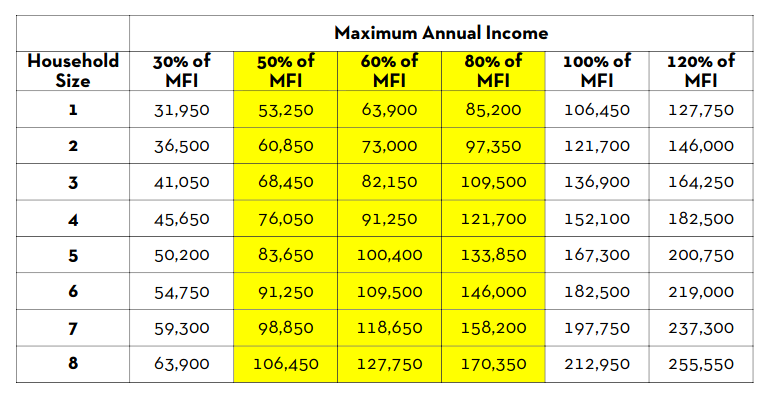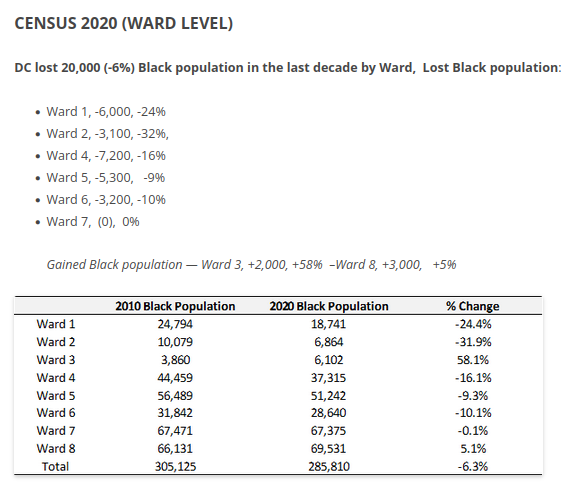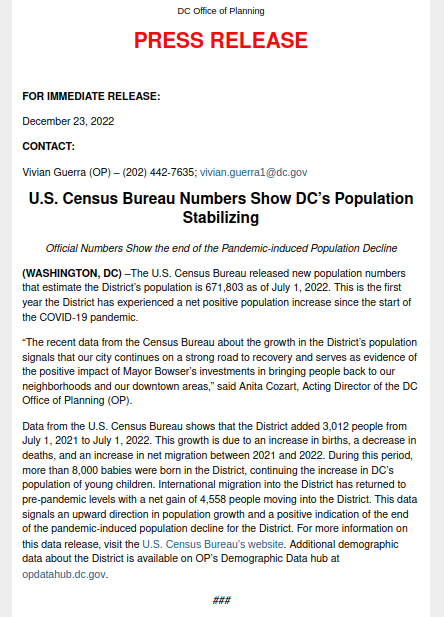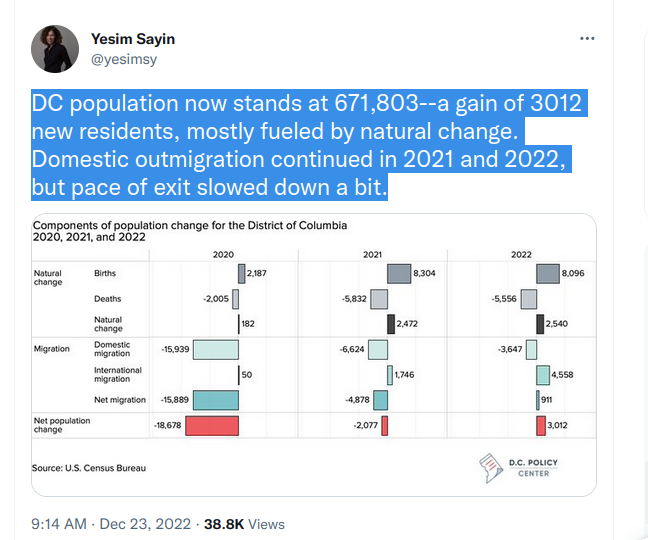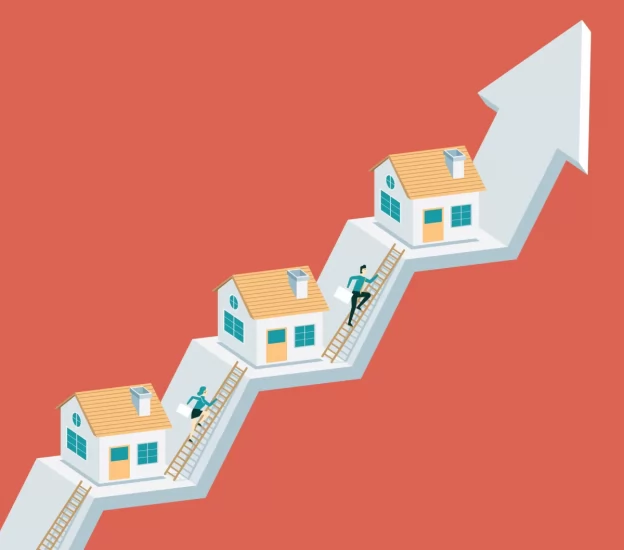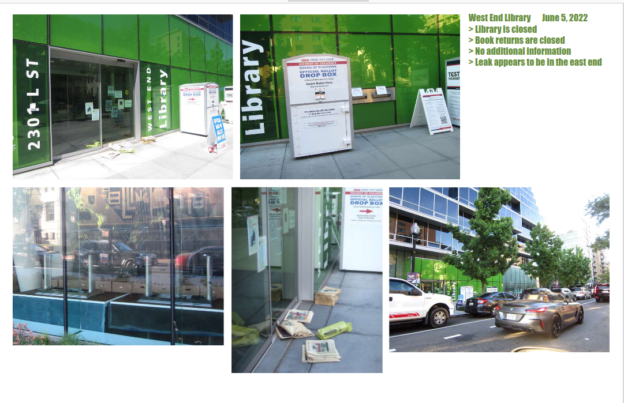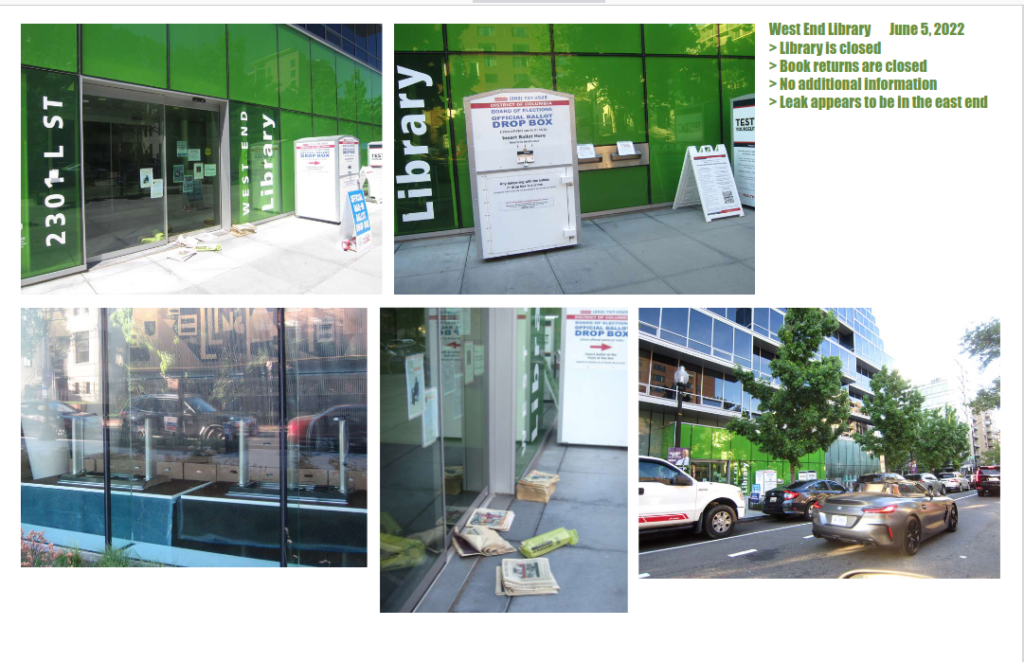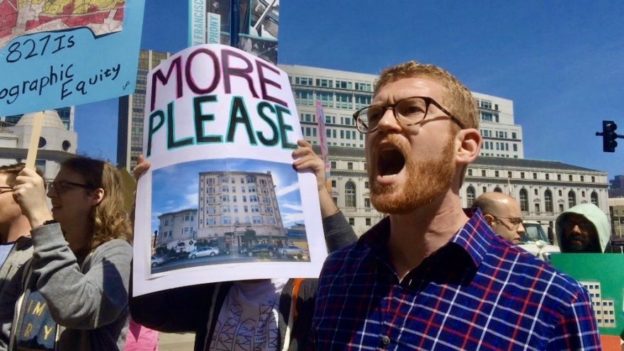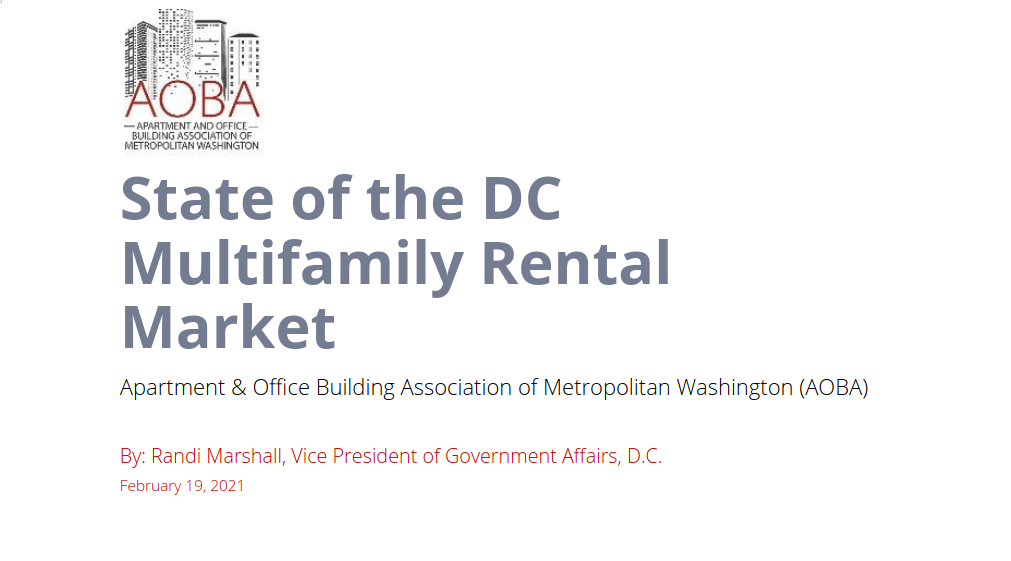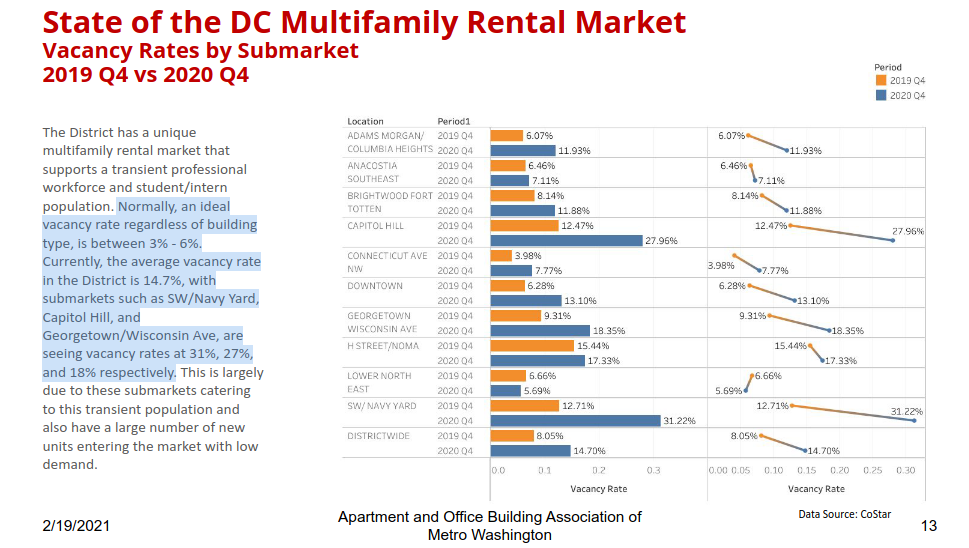Recently, the Mayor’s Office of Planning proudly announced that the city has started growing in population again.
There are apparently 3,000 new people in DC than there was in July 2021, pointing to U.S. Census numbers.
The local media quickly got-in-with-the-spin by parroting the executive to help spread the amazing word of D.C.’s “comeback.”
- “U.S. Census Bureau Numbers Show DC’s Population Stabilizing”
Prince Of Petworth, December 23, 2022
- D.C. Sees Slight Population Increase After Two Years Of Decline
WAMU, Jenny Garthright, Dec 26, 2022
- D.C.’s population grew last year, reversing pandemic-related decline
Washington Post, Fredrick Kunkle, December 23, 2022
Interestingly, it is the Federal City Council propped “think tank”, the DC Policy Center that checks the Mayor’s announcement pointing out there is still a net migration of single wealthy professionals (“urbanists”) to lands beyond the District and that the “new people” that are “stabilizing” DC’s population loss are likely babies.
Compare and contrast the recent heralding of new DC babies to two other data points:
D.C. isn’t constructing family sized units (3+ bedrooms) — Nearly 98% of all new housing units built in DC over the past 20 years are studio/1bdrm/2bdrm units (not family sized).
Many of the new young people who moved into the city over the past decade have hooked up, gotten hitched, and are starting families. With DC’s severe limits to DC’s unoccupied single family housing stock coupled with the almost zero new construction of family sized units, many newly productive DC families are leaving the city to raise their children.
What of the voluminous displacement of Black residents apparent with each major Census update ?
Contrast the recent DC baby news with the fact that the Mayor never puts out any press releases telling the tale of displacement of Black DC and working-families (maybe because its the policies of the city directly responsible for the harm). Instead, when the Census pops showing the horrible numbers of those being shown the door (60,000 Black folks made gone from the city over the past two Census cycles), the Mayor’s Office of Planning tried to spin this displacement as “choice.”
That is, the Mayor’s “planning” officials are suggesting DC’s vulnerable communities are leaving their Chocolate City, their homes, their families simply because they seek greener pastures. And, the local media went right along with this terrible trope, going further and suggesting that the Census shows better integration of the city (more mixing of races in DC’s neighborhoods).
Who do you believe it serves to champion population growth in DC while simultaneously downplaying the harms or worse rewriting the reality of displacement for tens of thousands of working families and Black residents who cannot afford the real estate speculation gold rush over the past two decades?!?
ARTICLES ABOUT GROWTH AND DISPLACEMENT OVER THE LAST SEVERAL YEARS IN REVERSE CHRONOLOGICAL ORDER:
D.C.’s population grew last year, reversing pandemic-related decline
https://www.washingtonpost.com/dc-md-va/2022/12/23/dc-census-2022-growth/
By Fredrick Kunkle
December 23, 2022 at 8:00 a.m. EST
D.C. Sees Slight Population Increase After Two Years Of Decline
Jenny Garthright, Dec 26, 2022, 1:08 pm
https://dcist.com/story/22/12/26/dc-new-census-numbers-population-increase/
1 in 4 public housing units sit vacant during D.C. affordability crisis
Washington Post, Steve Thompson, October 19, 2022
DC’s Population Growth Has Affected the Racial and Ethnic Composition of Wards 6, 7, and 8
By: Elizabeth Burton, October 7, 2022
https://greaterdc.urban.org/blog/dcs-population-growth-has-affected-racial-and-ethnic-composition-wards-6-7-and-8
Meaningful Racial Equity in DC Zoning
Kymone Freeman September 16, 2022
https://www.weactradio.com/2022/09/16/dc-zoning-roundtable/
Leavin’ the region — Greater Washington faces threat of increasing departures to other markets
Washington Business Journal, Tristan Navera, Sep 9, 2022
D.C. Becoming ‘Chocolate City’ Again After Pandemic ‘White Flight’ Reverses Gentrification Trend — The Census Bureau released new data this week.
Bruce C.T. Wright Written By Bruce C.T. Wright, July 1, 2022
https://newsone.com/4364960/dc-white-flight/
D.C.’s White population has declined for the first time in two decades
By Tara Bahrampour, Washington Post
July 1, 2022 at 6:00 a.m. EDT
https://archive.ph/cFQWZ
Charts of the week: A pandemic-induced exodus has broken the District’s population boom
Sunaina Bakshi Kathpalia, March 25, 2022
https://www.dcpolicycenter.org/publications/census-shows-pandemic-exodus-has-broken-dc-population-growth/
Chart of the week: Are D.C.’s 25-34 year olds leaving the District because of pandemic telework?
March 11, 2022, Bailey McConnell
https://www.dcpolicycenter.org/publications/young-professionals-leaving-dc-telework/
D.C.’s population is shrinking
Jan 10, 2022, Paige Hopkins
https://www.axios.com/local/washington-dc/2022/01/10/dc-population-shrinking
DC had largest percentage drop in population in nation
Valerie Bonk | vbonk@wtop.com
December 23, 2021, 6:54 AM
https://wtop.com/dc/2021/12/dc-had-largest-percentage-drop-in-population-in-nation/
Why Is D.C. Losing So Many Residents?
By Christopher Jones • December 27, 2021
https://georgetowner.com/articles/2021/12/27/d-c-s-population-loss/
New census data finds D.C. had nation’s largest percentage drop in population
December 23, 2021
Héctor Alejandro Arzate
https://www.npr.org/local/305/2021/12/23/1067215177/new-census-data-finds-d-c-had-nation-s-largest-percentage-drop-in-population
Many fled D.C. during pandemic, halting city’s population boom
Washington Post, Tara Bahrampour and Marissa J. Lang, Dec 24 2021
1 in 7 residents of the D.C. area moved during the pandemic, poll finds — A larger share of area residents say they have seriously considered moving to a new community since the pandemic began
Washington Post, Luz Lazo and Emily Guskin, August 17, 2021 at 6:00 a.m. EDT
Census Reveals Growing Diversity In Washington Region, Increasing White Population In D.C.
Martin Austermuhle, Aug 17, 2021, 4:15 pm
https://dcist.com/story/21/08/17/census-reveals-growing-diversity-in-washington-region-increasing-white-population-in-d-c/
2020 census numbers show where our region is growing and where it isn’t
By DW Rowlands (Contributor) August 18, 2021
https://ggwash.org/view/82241/2020-census-numbers-show-where-our-region-is-growing-and-where-it-isnt
VERIFY: Yes, data shows 17,000 more people left D.C. in 2020 than year before, amid pandemic
WUSA9 News, Evan Koslof, July 16, 2021
2020 Census shows U.S. population grew at slowest pace since the 1930s
By Tara Bahrampour, Harry Stevens, Adrian Blanco and Ted Mellnik
April 26, 2021
https://archive.ph/yDQi1
Opinion: There can be no racial equity in D.C. when Black and Brown families are being displaced
The Washington Post/Opinion by Minnie Elliott
March 5, 2021 at 9:00 a.m. EST
http://www.dcfeedback.com/fit2print/dc/506
COVID Is Carrying Young People Away from DC — Whether They Want to Leave or Not
Hayden Higgins, Oct 15, 2020
https://medium.com/seventhirty-dc/covid-is-carrying-young-people-away-from-dc-whether-they-want-to-leave-or-not-e38ec01d6259
More than 92 Percent of D.C. Residents Have Responded to 2020 Census
by Stacy M. Brown September 23, 2020
https://www.washingtoninformer.com/more-than-92-percent-of-d-c-residents-have-responded-to-2020-census/
This GIF Shows How The D.C. Area’s Demographics Have Changed Since 1970
Jan 14, 2020, 4:32 pm
https://dcist.com/story/20/01/14/this-gif-shows-how-the-d-c-areas-demographics-have-changed-since-1970/
The Reason D.C.’s Once-Dramatic Population Growth Is Slowing Down (And Why That’s Not So Bad)
Jan 30, 2019, Martin Austermuhle
https://wamu.org/story/19/01/30/the-reason-d-c-s-once-dramatic-population-growth-is-slowing-down-and-why-thats-not-so-bad/
Census: In D.C., Black Median Income Is Now Less Than a Third of White Median Income And other surprising highlights from the latest U.S. Census data
by Andrew Giambrone September 15th, 2017
https://washingtoncitypaper.com/article/325548/census-in-dc-black-median-income-is-now-less-than-a-third-of-white-median-income/
Why do people move out of D.C.
Washington Post, Perry Stein, June 10, 2015
I have no proof that apartments in these towers are being warehoused and acknowledge that such a thing may seem counterintuitive in today’s allegedly red-hot market — or any market. But if demand for expensive units is softer than we’ve been led to believe, I wonder if landlords could be hiding supply to keep their rents up.
Lane Brown, writer for Curbed, in his Jan. 27, 2023 report, “New Yorkers Never Came ‘Flooding Back.’ Why Did Rents Go Up So Much? Getting to the bottom of a COVID-era real estate mystery.”
